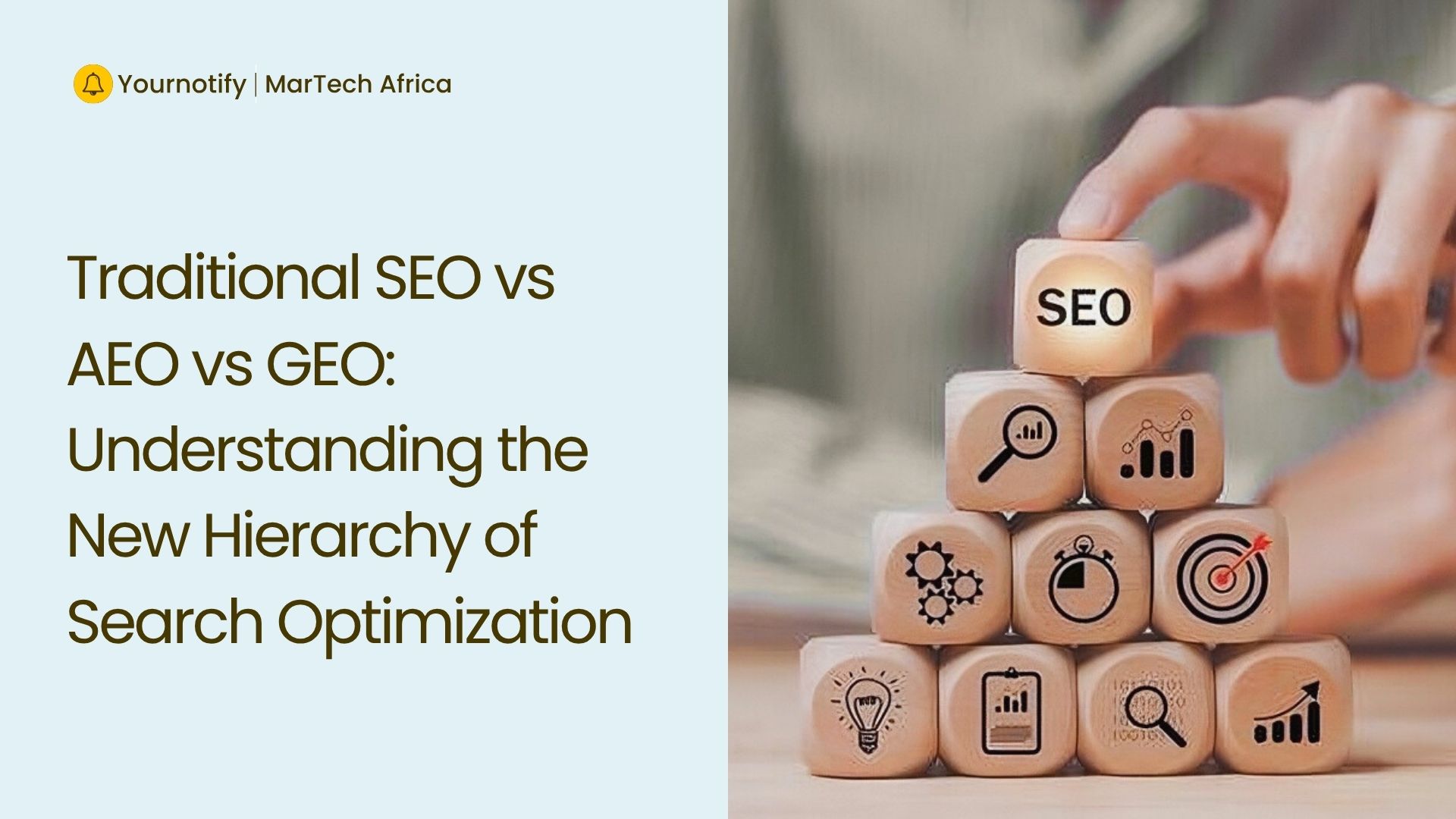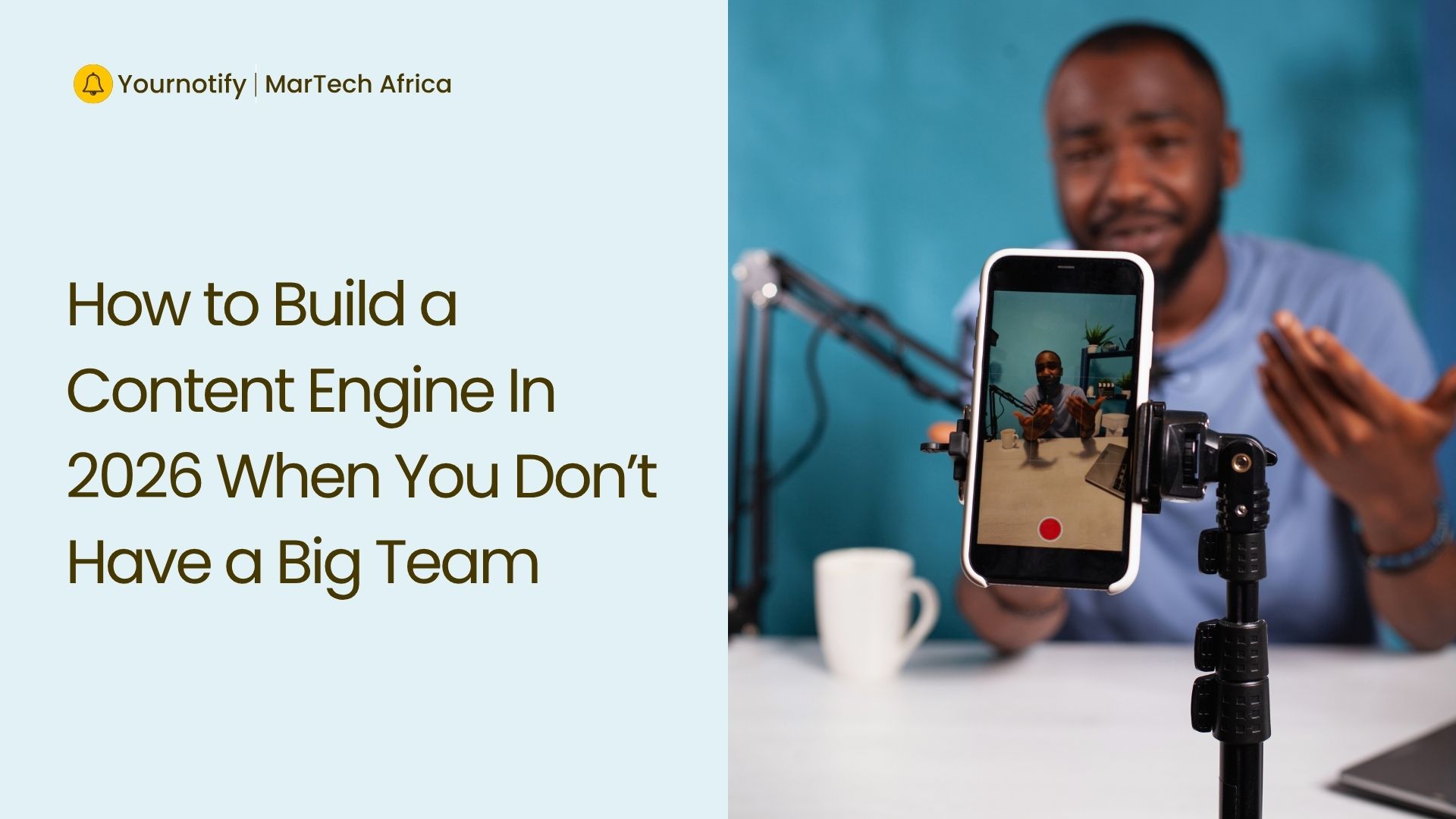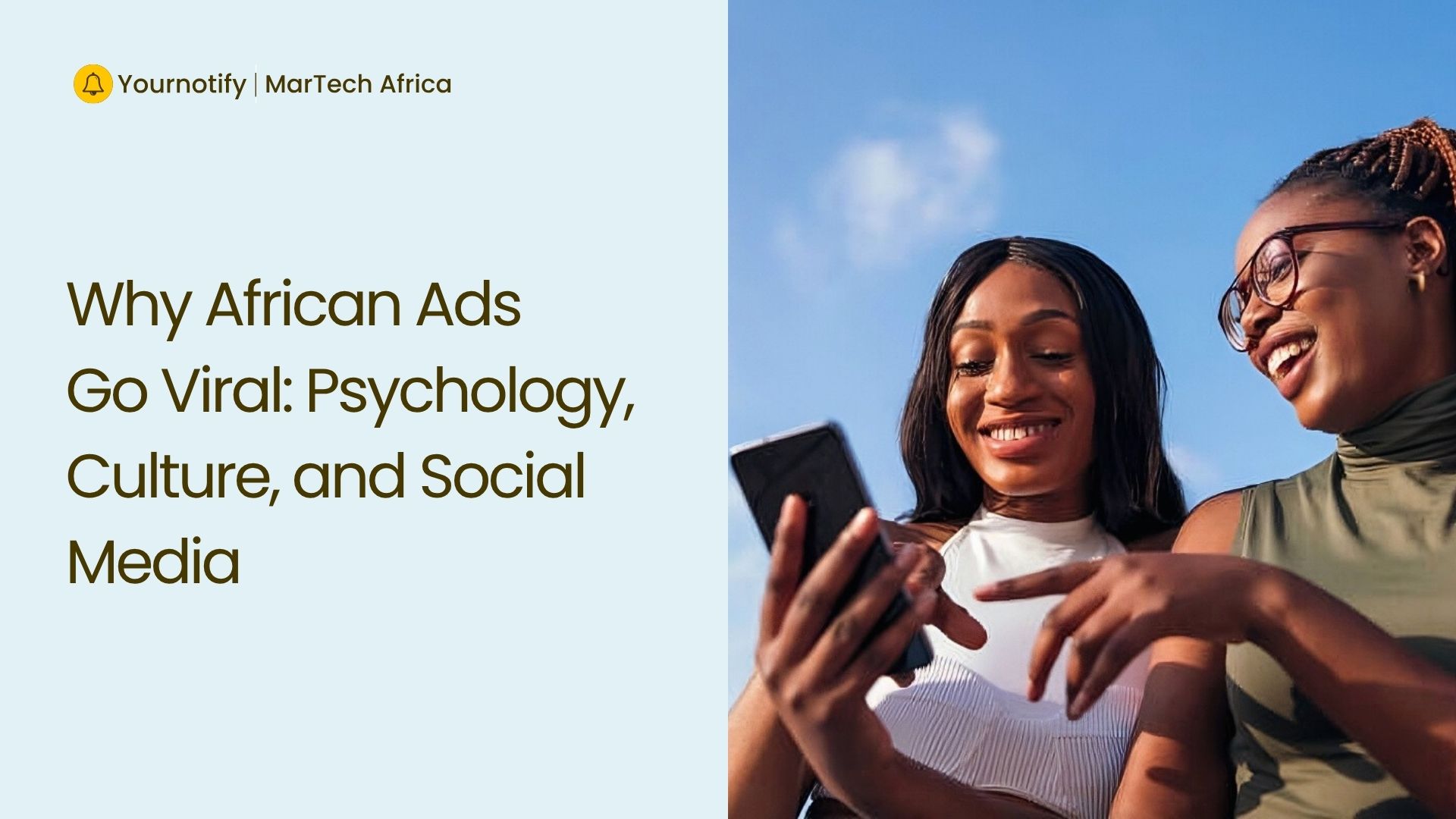In Africa’s rapidly evolving marketing landscape, podcasts are fast becoming one of the most intimate…

Traditional SEO vs AEO vs GEO: Understanding the New Hierarchy of Search Optimization
The way people search for information online is changing fast. For years, traditional SEO helped businesses dominate Google rankings and attract visitors through keywords and backlinks. But today, AI tools are rewriting the rules of discovery. The global AI market is growing at an unprecedented pace. According to Stanford’s 2025 AI Index Report, the global AI market is expected to exceed $300 billion this year, and that growth is transforming how users search, consume, and trust information online.
Search is no longer about matching keywords. It’s now about understanding intent and providing the best possible response. In fact, 60% of online experience now begin with A1-assisted search results, and that’s where Answer Engine Optimization (AEO) and Generative Engine Optimization (GEO) come in, two emerging approaches designed for a market where search engines and AI assistants deliver direct and conversational answers.
For African marketers and business owners, adapting to this change is key. As tools like Google’s AI Overviews, ChatGPT, and Perplexity become mainstream, visibility now depends on being part of the conversation, not just the search results. This piece breaks down how traditional SEO, AEO and GEO fit into the new search hierarchy and what it means for digital visibility in 2025
Traditional SEO – What Still Works and Its Limitations
Despite the rapid rise of AI-driven search, traditional SEO hasn’t become obsolete; it’s simply evolved. Google’s algorithm still rewards pages that demonstrate relevance, authority, and strong user experience. Well-structured websites with optimized titles, meta descriptions, clear headings, and fast loading times still outperform poorly optimized ones.
Also, content quality remains the core of visibility and search engines still rely on signals such as dwell time, click-through rates, and backlinks to determine credibility. Traditional SEO still revolves around the core pillars of keywords, backlinks, meta tags, and technical optimization. These elements remain the foundation of how search engines understand and rank websites.
However, the biggest limitation of traditional SEO is its dependence on keyword-based ranking systems. As users shift toward voice search, conversational queries, and AI-powered assistants, search behavior is no longer linear. People now ask complex, natural-language questions expecting instant, summarized answers, something standard SEO tactics aren’t built for.
For African businesses relying solely on traditional SEO, this means visibility without engagement. Being seen, but not necessarily visited. In short, traditional SEO still lays the foundation for online presence, but winning in 2025 requires blending SEO with Answer Engine Optimization and Generative Engine Optimization to stay discoverable in an AI-driven market.
AEO (Answer Engine Optimization): Optimizing for Direct Answers, Snippets, and Voice Assistants
Answer Engine Optimization (AEO) is the evolution of SEO, designed to make your content the answer itself. Instead of competing for clicks, AEO ensures your information appears directly in featured snippets, knowledge panels, and voice search results on tools like Google Assistant, Siri, and Alexa.
AEO works by structuring content in ways that search engines and AI assistants can easily understand. Using schema markup, FAQ sections, and structured data, brands can help algorithms extract and display concise, accurate answers. A 2024 Semrush report found that pages optimized with structured data are 60% more likely to appear in featured snippets or voice responses.
AEO success also depends on understanding conversational queries and the rise of zero-click searches. Users are increasingly asking longer, question-based prompts. For example, “What’s the best fintech app in Nigeria?” or “How do I register my business in Kenya?” and AI tools often deliver instant summaries without directing users to a website. By tailoring content to these natural-language questions, brands can ensure their information remains visible even when no clicks occur.
AEO also means embracing multilingual voice search. In regions where people speak English, Swahili, Yoruba, or Hausa, optimizing for local dialects and natural-language questions can dramatically boost visibility. In short, AEO helps your brand remain discoverable in an era where users no longer browse; they ask and expect instant answers.
GEO (Generative Engine Optimization): Preparing Content for AI-Driven Generative Search
Generative Engine Optimization (GEO) is the newest layer of search visibility. It focuses on optimizing content for AI-driven platforms like ChatGPT, Google Gemini, and Perplexity. Unlike traditional search engines that display ranked links, generative engines synthesize responses from multiple trusted sources. Your content isn’t just ranked, it’s referenced and summarized by AI systems.
To succeed with GEO, brands must create content that demonstrates depth, originality, and authority. Long-form, expert-driven articles that offer genuine insights are more likely to be cited by generative tools. Building trust signals such as verified authorship, consistent brand information, and reputable backlinks also helps AI engines identify reliable sources.
For brands, especially across Africa, GEO success goes beyond keyword ranking. It involves maintaining brand consistency across structured sources like Google Business Profile, LinkedIn, and Wikidata. Ensuring these platforms contain accurate, up-to-date information allows AI systems to cross-verify and confidently reference your brand in generated results. In essence, GEO is about preparing your content and your brand identity to thrive in a world where AI engines are dominating searches.
Integrating SEO vs AEO vs GEO: Actionable Steps for African Businesses
African brands can stay competitive in 2025 by combining the strengths of traditional SEO, AEO, and GEO into one cohesive strategy. Traditional SEO ensures your site remains discoverable through search rankings. AEO improves visibility in snippets and voice responses. GEO builds credibility within generative platforms that now drive a growing share of online visibility.
To put this into practice, maintain strong SEO basics, fast site speed, mobile optimization, and quality backlinks. Add AEO elements like structured FAQs and schema markup to capture direct answers. For GEO, focus on expert-led, data-backed content and ensure your brand information is consistent across structured sources.
Localization also plays a key role. Optimize for regional languages and cultural nuances to reach Africa’s diverse digital audience. Companies like Flutterwave and Jumia already demonstrate this by tailoring content to user intent while maintaining strong technical SEO foundations, a balance that makes them visible across both search and generative platforms.
Conclusion
The future of search is hybrid. Traditional SEO still provides the foundation, but long-term success now depends on how effectively it’s blended with AEO and GEO. African businesses that adapt early will lead the next wave of digital growth, staying visible not just on Google but across AI-powered discovery systems.
The message is clear: it’s time to future-proof your brand. Optimize for how people search and how AI answers. The businesses that evolve now won’t just keep up with change; they’ll define the new standards of visibility in the era of intelligent search.
Related Content
20 Must-Know Martech Terms for African Marketers in 2025


